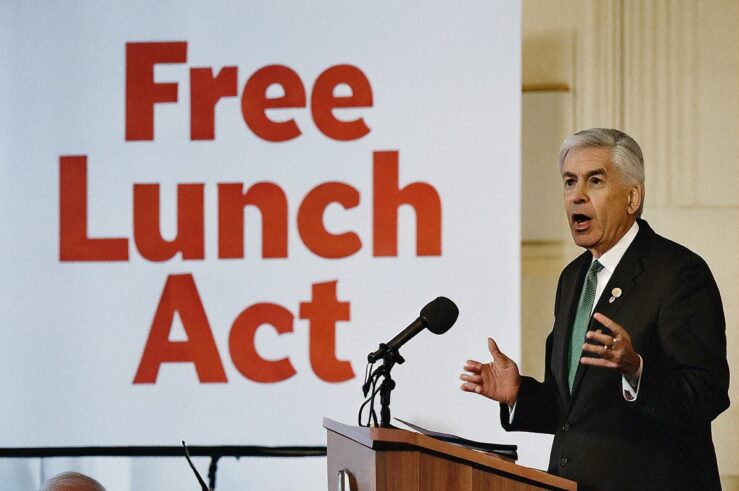We live in a time of optimism about government’s ability to improve upon the unregulated state of affairs. From health insurance to financial markets to the types of fats we eat, cars we drive, and sources of energy we consume, there is a sense among our political, media, and academic elites that our privately ordered affairs are out of whack and can be improved by government rules. These elites rarely stop to ask whether the private ordering whose malfunctions they are seeking to correct is, in fact, private; in reality, it’s often not (see, e.g., the role of Fannie and Freddie in creating the housing bubble at the heart of the financial crisis, the role of the tax deduction for employer-provided health insurance in eviscerating the price competition that would constrain health care costs). Rather than asking how government meddling may have contributed to an undesirable situation, the elites usually look for a market failure — some systematic defect in the system of private ordering — and then invoke that failure as the rationale for a governmental fix.
This is actually a step forward. In the not-so-distant past, the policy elites didn’t concern themselves at all with the underlying cause of an unhappy state of affairs; they instead simply commanded outcomes they found desirable. So, for example, 1970s-era environmental statutes didn’t directly focus on getting polluters to “internalize their externalities” (explained below); instead, the laws followed a command-and-control model that mandated the adoption of particular technologies, dictated emission limits, etc. Compared to their predecessors who tried merely to force outcomes they deemed desirable, todays’ interventionists, who generally aim to remedy the cause of bad outcomes (the market failure “disease” giving rise to the bad outcome “symptom”), are a sophisticated bunch.
Externalities — costs or benefits that are not borne by the people who create them — provide a rationale for many government interventions. When a person receives all the benefit of an activity but doesn’t bear all the costs the activity creates (that’s a “negative” externality), the actor will tend to do “too much” of the activity at issue. For example, factories that can spew smokes, smells, and health risks onto their neighbors will tend to operate to a level where the benefits of the last units produced, benefits that are fully captured by the factories, are less than the last units’ production costs, some of which are foisted onto the factories’ neighbors. Conversely, when a person bears all the costs but fails to capture all the benefits of an activity (that’s a “positive” externality), the actor will do “too little” of the activity at issue. For example, apartment dwellers who share a yard with other tenants bear all the costs of their gardening efforts but can’t capture all the benefits (some of which will inure to their neighbors) and will therefore fail to perform yard-beautification efforts that produce greater total benefits (which are shared) than costs (which are not). Externalities represent legitimate market failures — systematic defects in private ordering — and may lead to undesirable states of affairs (too much industrial production, not enough gardening, etc.).
Externalities are therefore routinely invoked by commentators and policymakers seeking to justify government intervention in private ordering. In last Sunday’s New York Times Magazine, for example, economist Paul Krugman invoked negative externalities to justify regulation of CO2 emissions: “When there are ‘negative externalities’ — costs that economic actors impose on others without paying a price for their actions — any presumption that the market economy, left to its own devices, will do the right thing goes out the window.” Krugman then went on to argue that the proposed cap and trade scheme for limiting carbon emissions is the best available means of alleviating the externality created by industrial processes that emit carbon.
Externalities may also provide justification for regulations outside the environmental/property rights arena. For example, President Obama has invoked externalities to justify his proposed bank tax. The President explained that the bank tax, whose proceeds would pay for future bailouts, is really an attempt to force banks to pay for the risks they impose as they take on greater debt loads. He explained:
[T]he bigger the firm — and the more debt it holds — the larger the fee. Because we are not only going to recover our money and help close our deficits; we are going to attack some of the banking practices that led to the crisis.
The Economist recently asserted President Obama’s externality point more directly:
[A] tax on size would seek to correct for the large negative externality associated with the systemic risk presented by too-big-to-fail banks. The larger a bank gets, the less likely the government is to allow it to fail, and the more shielded it is from potential losses. Size therefore generates some significant social costs, particularly since the negative externality encourages firms to take on too much risk. A tax on bank size would get firms to internalise the social cost.
[Note that this ignores the role an implicit government guarantee (such as that in the Dodd bill) plays in encouraging firms to grow to “too big to fail” size.]
Positive externalities — benefit spillovers — are also invoked to justify government interventions. Thus, we heavily subsidize electric cars on the theory that the producers and purchasers of such vehicles are creating public benefits — a market for zero- or low-emission automobiles — that they cannot appropriate for themselves. The federal government provides a $7,500 tax credit for the purchase of an electric vehicle, and numerous states similarly subsidize such purchases. For example, California, staggering under a $20 billion deficit, will pay its citizens $5,000 for buying a standard battery electric car!
These various interventions to correct for externalities are the brainchild of Cambridge economist Arthur Cecil Pigou. Writing in the 1920s, Pigou recognized that negative externalities would result in “too much” of an activity and that positive externalities would result in “too little.” He thus concluded that when externalities exist “[n]o ‘invisible hand’ can be relied on to produce a good arrangement of the whole from a combination of separate treatments of the parts. It is therefore necessary that an authority of wider reach should intervene.” Specifically, he asserted,
[i]t is … possible for the State, if it so chooses, to remove the divergence in any field by ‘extraordinary encouragements’ or ‘extraordinary restraints’ upon investments in that field. The most obvious forms which these encouragements and restraints may assume are, of course, those of bounties and taxes.
In other words, the government should tax activities that create negative externalities and subsidize those that create positive externalities, thereby ensuring that the actors at issue bear the full costs and benefits of their conduct. If they do, they’ll act optimally, taking all actions that create benefits in excess of cost and none that don’t. Thus was born the idea of “Pigovian” taxes and subsidies — the notion underlying the proposed climate change legislation, President Obama’s bank tax, the various subsidies for electric vehicles, and scads of other government interventions into private affairs.
In 1960, Ronald Coase demonstrated that Pigovian taxes and subsidies are not necessary to generate an optimal level of externality-creating conduct when property rights are clearly defined and transferable, and transaction costs are sufficiently small. In such situations, actors and those affected by their actions will bargain for the optimal level of the activity at issue. (For a lucid explanation of Coase’s response to Pigou, see David Friedman’s terrific essay, The Swedes Get It Right.) But despite Coase’s powerful criticism of Pigou’s claim that externalities inevitably require a governmental fix, Pigou carried the day in policy circles. Perhaps that’s because transaction costs so often prevent so-called Coasean bargains from occurring — an outcome that Coase himself acknowledged. (Indeed, Coase’s main point was to emphasize the importance of transaction costs. The oft-heard refrain, “The Coase Theorem doesn’t apply because there are transaction costs,” misses the point entirely.)
While policymakers and commentators have been quick to point out the limitations of Coasean bargains as a solution to externalities, they have rarely recognized the limitations of Pigovian taxes and subsidies. Pigou himself, however, frankly acknowledged those limitations. As economist Bruce Yandle explains in a wonderful essay in the current issue of Regulation Magazine, Pigou recognized that externalities do not inevitably justify government intervention because the government is often institutionally incapable of improving upon the unregulated state of affairs. After explaining how his proposals for taxes and subsidies could, in theory, generate an optimal state of affairs, Pigou conceded:
[W]e cannot expect that any public authority will attain, or will even wholeheartedly seek, that ideal. Such authorities are liable alike to ignorance, to sectional pressure and to personal corruption by private interest. A loud-voice part of their constituents, if organized for votes, may easily outweigh the whole.
This pithy statement by Pigou, written in 1932, foreshadowed insights that would be further developed by two groups of economists who cautioned against excessive governmental authority: the Austrians (F.A. Hayek, Ludwig von Mises, etc.) and Public Choice scholars (James Buchanan, Gordon Tullock, etc.).
The former group emphasized what Pigou referred to as governmental authorities’ “ignorance.” A scheme of Pigovian taxes and subsidies requires authorities to know, for different activity levels, the degree to which actors’ private costs and benefits depart from the total costs and benefits created by their conduct. Policymakers, who are often far removed from the conduct at issue and have no way of knowing individuals’ subjective preferences, generally lack this information.
Public choice scholars, then, emphasized what Pigou referred to as “personal corrpution by private interest” and “sectional pressure.” These scholars recognized that politicians and others charged with wielding the power of the state do not cease to be rational self-interest maximizers once they step into the public arena; rather, they will exercise their taxing and subsidizing authority to further their own desires for power, prestige, and money. In so wielding their authority, they are particularly prone to manipulation by discrete groups on which the benefits of an intervention tend to be concentrated. When imposition of a Pigovian tax or subsidy involves concentrated benefits and diffuse costs, the small, easily organized group favored by the intervention will put “sectional pressure” on self-interested politicians to support the intervention, and the large group asked to bear the diffuse costs of the intervention will be unable to organize an opposition. Thus, Pigovian interventions will tend to reward discrete special interests at the expense of large, disorganized groups. (We have further explored the insights of the Austrians and Public Choice scholars here.)
In this age of confidence about government’s ability to improve upon the unregulated state of affairs, our leaders would do well to heed Pigou’s own warnings about government’s limits and to realize that an externality is not a sufficient condition for government intervention.




